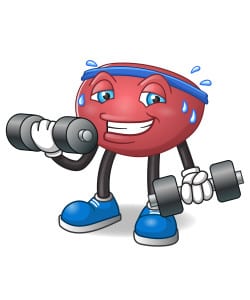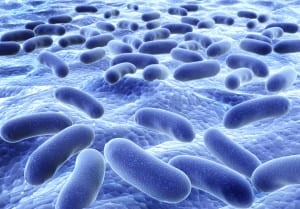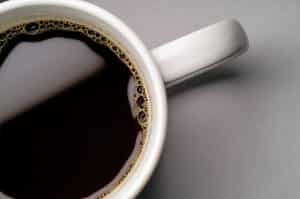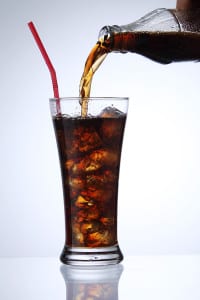Can Overactive Bladder Improve On Its Own?
 Overactive bladder is described as a chronic condition. It usually does not go away on its own and can get worse if it is not properly treated. The good news is that if you talk to your doctor about your overactive bladder symptoms, the appropriate care can result in significant improvements. Treating overactive bladder can reduce the impact that this condition has on your overall quality of life. According to studies, approximately 40 percent of women and 30 percent of men are living with symptoms of this condition. If you’re one of them, know that you can get better, but you’ll likely need a doctor’s care to do that.
Overactive bladder is described as a chronic condition. It usually does not go away on its own and can get worse if it is not properly treated. The good news is that if you talk to your doctor about your overactive bladder symptoms, the appropriate care can result in significant improvements. Treating overactive bladder can reduce the impact that this condition has on your overall quality of life. According to studies, approximately 40 percent of women and 30 percent of men are living with symptoms of this condition. If you’re one of them, know that you can get better, but you’ll likely need a doctor’s care to do that.
Symptoms of an overactive bladder include:
- A sudden sensation to urinate that is difficult to control
- Accidental incontinence as a result of the urgent sensation.
- Urinating eight or more times in a 24 hour period.
- Waking up more than two times a night to urinate.
What Causes Overactive Bladder?
Normally, nerve endings in the bladder signal to the brain when the bladder fills with urine. These signals cause the bladder to contract and the urethra to relax so urine can escape. A person with overactive bladder experiences involuntary contractions of the bladder muscle. This may happen for several reasons, including health conditions such as diabetes, urinary tract infection, multiple sclerosis, or stroke. Women are susceptible to overactive bladder as they experience the hormone shifts that occur during menopause. Men may experience an overactive bladder secondary to an enlarged prostate. Constipation and incomplete bladder emptying may also contribute to the symptoms of overactive bladder.
Managing and Treating Overactive Bladder
If you are experiencing the symptoms of an overactive bladder, you should talk to your doctor or schedule a consultation with a urologist. Here, our staff works with each patient to ensure they are comfortable and informed of all viable treatment options. In addition to clinical treatment, a few changes in lifestyle may help reduce the intense urge to urinate. These include:
- Limiting acidic foods and beverages.
- Reducing the consumption of alcohol and caffeine.
- Doing Kegel exercises to strengthen the pelvic floor muscles.
- Losing weight, if necessary, to reduce pressure on the bladder.
- Bladder retraining.
To determine the best way to treat an overactive bladder, a urologist may perform a series of tests. This enables them to customize treatment around each patient’s needs. Some of the common methods of treating this condition include medication and interStim therapy. The OAB Clinic at Erlanger East Hospital is a comprehensive clinic dedicated to the evaluation and management of overactive bladder. Here, we have all of the resources to diagnose and treat even the most complex patients, including those who have failed prior treatments or are having complications from previous therapies.
Regain control over your bladder health. Contact the OAB Clinic at (423) 778-4OAB today.


 Behavioral treatments for OAB include fluid reduction, diet changes, weight loss, and pelvic floor exercises. Bladder training (BT) is another means of behavior therapy for OAB that can be effective in a properly motivated or dedicated person. BT begins with education about overactive bladder often accomplished with brochures, websites or videos. Completing a record for several days of how often one voids (and whether there is an urgency to void) helps to identify a time interval of typical urination. The goal becomes to gradually increase that interval, usually by 30 minutes every 1-2 weeks. There are numerous distraction techniques (pelvic contractions, relaxation techniques) that can be used to ignore any urinary urgency that comes in between the interval.
Behavioral treatments for OAB include fluid reduction, diet changes, weight loss, and pelvic floor exercises. Bladder training (BT) is another means of behavior therapy for OAB that can be effective in a properly motivated or dedicated person. BT begins with education about overactive bladder often accomplished with brochures, websites or videos. Completing a record for several days of how often one voids (and whether there is an urgency to void) helps to identify a time interval of typical urination. The goal becomes to gradually increase that interval, usually by 30 minutes every 1-2 weeks. There are numerous distraction techniques (pelvic contractions, relaxation techniques) that can be used to ignore any urinary urgency that comes in between the interval. This enlightening paper begins by pointing out that our misunderstanding of urine as sterile dates back to the 19th century when we were just beginning to grasp the nature of bacteria. This idea of a sterile bladder delayed one of the most important advancements in our treatment of patients with neurologic injuries of the bladder: self-catheterization. Prior to the 1960’s, patients with urinary retention were not told to self-catheterize out of fear that it would lead to infections. Unfortunately, the opposite is true and infections are actually prevented by catheterization in these patients.
This enlightening paper begins by pointing out that our misunderstanding of urine as sterile dates back to the 19th century when we were just beginning to grasp the nature of bacteria. This idea of a sterile bladder delayed one of the most important advancements in our treatment of patients with neurologic injuries of the bladder: self-catheterization. Prior to the 1960’s, patients with urinary retention were not told to self-catheterize out of fear that it would lead to infections. Unfortunately, the opposite is true and infections are actually prevented by catheterization in these patients. We begin by noting that many patients who get up frequently at night do so because they make too much urine at night. The bladder is simply filling up more quickly than it should. Normally for young people, no more than 20% of your daily urine production should come while you are asleep. In older patients, less than 33% is more normal. Patients who exceed this are said to have nocturnal polyuria, meaning they make too much urine at night. This is easily diagnosed by having patients keep a diary for several nights to measure how much urine they make during the night compared to the day.
We begin by noting that many patients who get up frequently at night do so because they make too much urine at night. The bladder is simply filling up more quickly than it should. Normally for young people, no more than 20% of your daily urine production should come while you are asleep. In older patients, less than 33% is more normal. Patients who exceed this are said to have nocturnal polyuria, meaning they make too much urine at night. This is easily diagnosed by having patients keep a diary for several nights to measure how much urine they make during the night compared to the day. A recent review article by
A recent review article by  A recent review article by
A recent review article by  2. Say No to Alcohol and Caffeine
2. Say No to Alcohol and Caffeine
